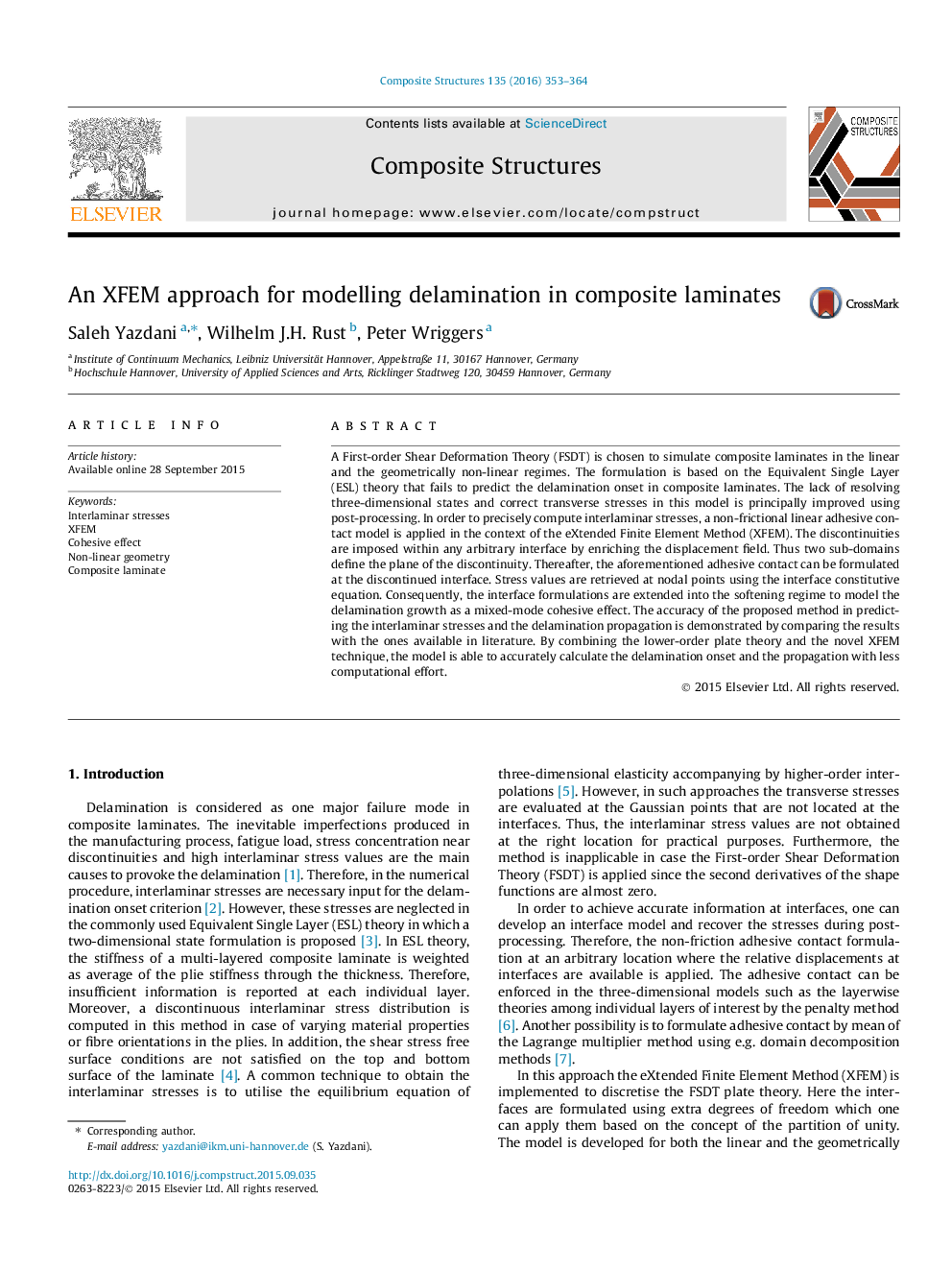| Article ID | Journal | Published Year | Pages | File Type |
|---|---|---|---|---|
| 251192 | Composite Structures | 2016 | 12 Pages |
A First-order Shear Deformation Theory (FSDT) is chosen to simulate composite laminates in the linear and the geometrically non-linear regimes. The formulation is based on the Equivalent Single Layer (ESL) theory that fails to predict the delamination onset in composite laminates. The lack of resolving three-dimensional states and correct transverse stresses in this model is principally improved using post-processing. In order to precisely compute interlaminar stresses, a non-frictional linear adhesive contact model is applied in the context of the eXtended Finite Element Method (XFEM). The discontinuities are imposed within any arbitrary interface by enriching the displacement field. Thus two sub-domains define the plane of the discontinuity. Thereafter, the aforementioned adhesive contact can be formulated at the discontinued interface. Stress values are retrieved at nodal points using the interface constitutive equation. Consequently, the interface formulations are extended into the softening regime to model the delamination growth as a mixed-mode cohesive effect. The accuracy of the proposed method in predicting the interlaminar stresses and the delamination propagation is demonstrated by comparing the results with the ones available in literature. By combining the lower-order plate theory and the novel XFEM technique, the model is able to accurately calculate the delamination onset and the propagation with less computational effort.
